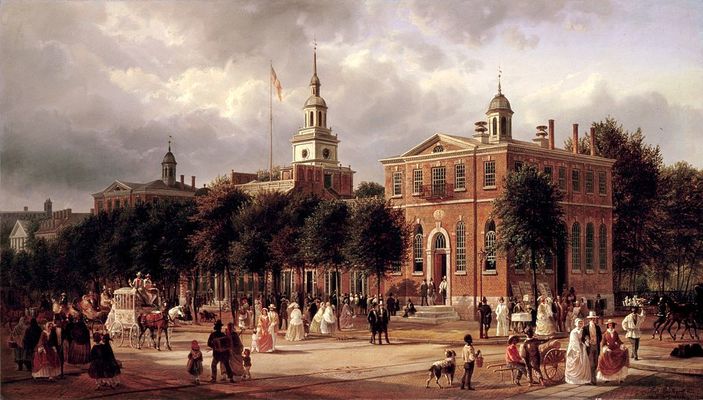Written by Richard J. Smith.
Many volumes have been written detailing the Federal Convention of 1787. With the anniversary of the convening of the convention on May 25th, I thought it would be appropriate to revisit that historical event.
With George Washington presiding, the Federal Convention convened on May 25, 1787, at the Pennsylvania State House (Independence Hall). Philadelphia was chosen due to its central location, and as the largest city in the United States at 40,000 people, it made logistical sense.
Fifty-five delegates sweated it out with the widows nailed shut and the doors closed to keep their debates private. The delegates were forbidden to speak about the proceedings in public.
Several plans were introduced and called as the William Patterson Plan, the Alexander Hamilton Plan, the New Jersey Plan, and the James Madison (Virginia) Plan. The debates were heated as tempers grew hotter than the stifling room.
An agreement was made that “a national government ought to be established, consisting of a supreme legislative, a supreme executive, and a supreme judiciary.” As a result, they voted to unshackle themselves from the Articles of Confederation.
George Mason told the convention, “It cannot be more inconvenient to any gentleman to remain absent from his private affairs, than it is for me; but I will bury my bones in this city rather than expose my country to the consequences of dissolution of the convention without anything being done.”
The Founders felt an obligation to their fellow citizens and to posterity. They wanted to build a republic for the ages.
The Federal Convention of 1787 featured the best statesmen the United States had to offer at that time. They felt their work was so important, they spent a total of four months drafting of the Constitution. As the oldest document in the world proclaiming the individual rights of a nation’s citizens, I believe they got it right.
For additional information about the Federal Convention read Max Farrand’s The Records of the Federal Convention of 1787. James Madison kept the best journal about the convention and his notes are found here.


